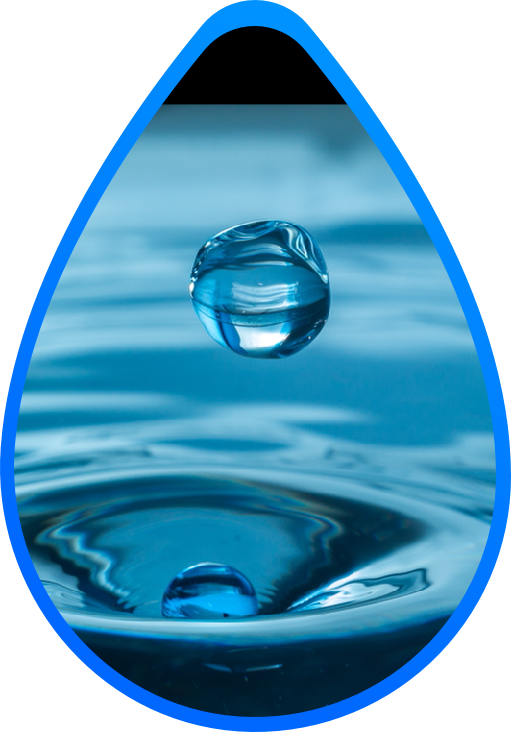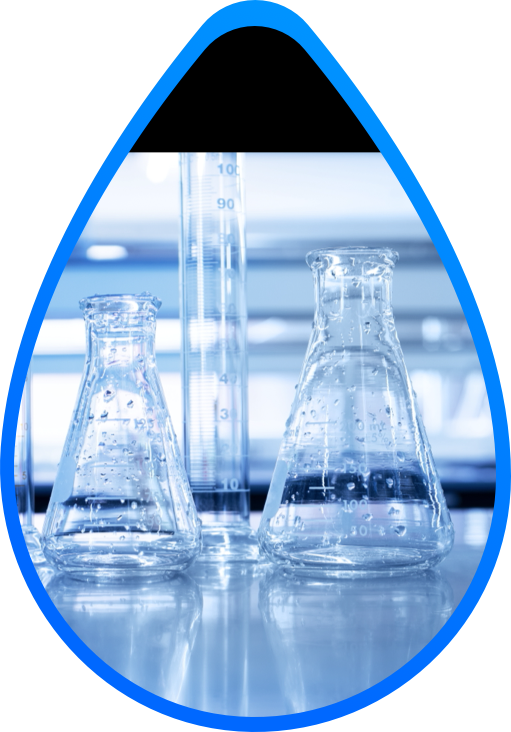Customer Information
Payment Information
Confirmation
Service Package
For Home
For Premises
New Home Move-in Package (For 2 Locations)
🎉Welcome to Your New Home!
New Home Move-in Package (For 2 Locations) – a special service designed for new homeowners to ensure your water quality meets safety standards by checking for harmful substances. Start your journey to a healthier home for you and your family with our comprehensive water testing program!
Antimony(Sb), Arsenic(As), Barium(Ba), Boron(B), Cadmium(Cd), Chromium(Cr), Copper(Cu), Lead(Pb), Mercury(Hg), Nickel(Ni), Selenium(Se), Manganese(Mn), Colour, Conductivity, Free Chlorine, pH Value, Turbidity, E. coli, Total Coliform, HPC, Legionella
Quantity
New Home Move-in Package
🎉Welcome to Your New Home!
New Home Move-in Package – a special service designed for new homeowners to ensure your water quality meets safety standards by checking for harmful substances. Start your journey to a healthier home for you and your family with our comprehensive water testing program!
Antimony(Sb), Arsenic(As), Barium(Ba), Boron(B), Cadmium(Cd), Chromium(Cr), Copper(Cu), Lead(Pb), Mercury(Hg), Nickel(Ni), Selenium(Se), Manganese(Mn), Colour, Conductivity, Free Chlorine, pH Value, Turbidity, E. coli, Total Coliform, HPC, Legionella
Quantity
12+5+2 Extensive Home Package
Antimony(Sb), Arsenic(As), Barium(Ba), Boron(B), Cadmium(Cd), Chromium(Cr), Copper(Cu), Lead(Pb), Mercury(Hg), Nickel(Ni), Selenium(Se), Manganese(Mn), Colour, Conductivity, Free Chlorine, pH Value, Turbidity, E. coli, Total Coliform
Quantity
6+5+2 Integrated Home Package
Antimony(Sb), Cadmium(Cd), Chrominum(Cr), Copper(Cu), Lead(Pb), Nickel(Ni), Colour, Conductivity, Free Chlorine, pH Value, Turbidity, E. coli, Total Coliform
Quantity
12+5 Comprehensive Home Package
Antimony(Sb), Arsenic(As), Barium(Ba), Boron(B), Cadmium(Cd), Chromium(Cr), Copper(Cu), Lead(Pb), Mercury(Hg), Nickel(Ni), Selenium(Se), Manganese(Mn), Colour, Conductivity, Free Chlorine, pH Value, Turbidity
Quantity
6+5 Basic Home Package
Antimony(Sb), Cadmium(Cd), Chrominum(Cr), Copper(Cu), Lead(Pb), Nickel(Ni), Colour, Conductivity, Free Chlorine, pH Value, Turbidity
Quantity
12 Heavy Metals HKDWS Test
Antimony(Sb), Arsenic(As), Barium(Ba), Boron(B), Cadmium(Cd), Chromium(Cr), Copper(Cu), Lead(Pb), Mercury(Hg), Nickel(Ni), Selenium(Se), Manganese(Mn)
Quantity
6 Heavy Metals Basic Test
Antimony (Sb), Cadmium(Cd), Chromium(Cr), Copper(Cu), Lead(Pb), Nickel(Ni)
Quantity
5 Physical & Chemical Parameters
Colour, Conductivity, Free Chlorine, pH Value, Turbidity
Quantity
Heterotrophic Plate Count Test
Heterotrophic Plate Count (HPC)
Quantity
Legionella Test
Legionella
Quantity
Lead Test
Lead(Pb)
Quantity
Copper Test
Copper(Cu)
Quantity
Quality Water Supply Testing for Buildings
Antimony (Sb), Cadmium ( Cd ), Chromium(Cr), Copper (Cu), Lead (Pb), Nickel (Ni), Iron ( Fe), pH Value, Turbidity, Colour, Conductivity, E. coli, Total Coliform
Drinking Water Safety Test for Premises
Antimony(Sb), Cadmium(Cd), Chromium(Cr), Copper(Cu), Lead(Pb), Nickel(Ni), pH, Turbidity, Colour, Electricall Conductivity, Free Residual Chlorine, HPC, E. Coli
Commissioning Test of Fresh Water Plumbing System
Antimony(Sb), Cadmium(Cd), Chromium(Cr), Copper(Cu), Lead(Pb), Nickel(Ni), pH, Turbidity, Colour, Electricall Conductivity, Free Residual Chlorine, HPC, E. Coli
New Commissioning Test for Plumbing Works in Occupied Buildings / Village Houses
Antimony(Sb), Cadmium(Cd), Chromium(Cr), Copper(Cu), Lead(Pb), Nickel(Ni), pH, Turbidity, Colour, Electricall Conductivity, Free Residual Chlorine, HPC, E. Coli
How can I prepare the water sampling bottle?
You may prepare distilled water bottle for sampling. It is not recommended to use bottles of mineral water because the residuals will affect the test results. OR You may select "Yes, I need a water sample bottle(s)" in the order form if you need Promet to send a water sampling bottle to you. HK$150 will be charged for the 1st bottle. Additional HK$25 per bottle from the 2nd onward. It will be sent to you by courier. Fully rinsed before use.
How shall I pay?
You can make payment by the following ways:
a. Payment via PayMe
You will be directed to PayMe payment system. PayCode is generated for them to scan and pay with PayMe.
Before you make a payment, please read carefully for the terms of use of PayMe system.
b. Payment via Internet FPS or Banking
Name of Beneficiary Bank: The Hong Kong and Shanghai Banking Corporation Limited (HSBC)
Bank Account Number: 808-451496-001
FPS ID: 163743594
Name of Beneficiary: Promet Metals Testing Laboratory Ltd.
Please upload the image of deposit slip, remittance advice or transaction record in our web form.
In addition to the water quality testing content of the above package, what other water testing Promet provide?
Promet laboratory has a variety of water testing such as swimming pool water, cooling tower water, waste water etc. Please contact us for quotation.
Safeguard your Beloved Ones
Just a few simple steps you can take samples and conduct professional drinking water quality test. Promet helps you protect the health and safety of your family!
Test Process
For Home
For Premises
6 Simple Steps to Collect Sample at Home
There is a lot that goes into actually ensuring the water we drink is safe and clean, including testing.

Select your service package and complete the online order
Prepare a distilled water bottle for sampling. It is not recommended to use bottles of mineral water because the residuals will affect the test results. Fully rinsed before use.
Take the first use 800ml water sample of the day.
Put a label with application number on the bottle (the application number will be mentioned in confirmation email of your order)
Promet arranges courier to collect sample(s) from you.
You will receive the test results within 7 working days by email.
Sampling Protocol for Premises
Promet carries out sampling according to the “Sampling Protocol for Commissioning Test of Fresh Water Plumbing System”, which can be applied to the water supply guideline “New Commissioning Requirements for New Plumbing Works”, “New Commissioning Requirements for Plumbing Works in Occupied Buildings/Village Houses” and “Water Sampling and Solder Joint Sampling and Testing for Newly Installed Fresh Water Inside Service” issued by Water Supplies Department.

Our sampling specialists went through relevant and proper training and are familiar with the sampling procedures and handling of water samples, will ensure that the samples are representatives of water quality of the premises and free from contamination during the course of sampling, sample storage and transportation.
Our sample bottles are made of qualified plastic material with a capacity of 1-litre for metal tests, 500ml for chemical and physical tests and 250ml for bacteriological test. All sample bottles are prepared in accordance with the ISO standards.
Our specialist will collect water samples at the locations selected by WSD according to the steps outlined in the WSD Sampling Protocol, and record all information and observation.
All sample bottles will be labelled immediately, stored properly and delivered to the laboratory for testing as soon as possible.
For the Drinking Water Safety Test for Premises, Promet will send the test results by email as soon as they are ready, a printed report and certificate of compliance will be issued within a week after the completion of test.
As for Commissioning Test of Fresh Water Plumbing System and New Commissioning Test for Plumbing Works in Occupied Buildings/Village Houses, Promet will submit a complete report to the WSD within 5 days after collecting the samples for the later water meter application.
What is the best time of the day shall I collect the water sample(s)?
We would recommend you collect the water sample(s) before the first use of water in the early morning. After a night of stagnation, if the water sample(s) collected at that time pass the requirements, the results are more accurate.
How often do I need to test water quality?
We would recommend to conduct a water quality test if you have never done that before. Afterwards, we would suggest a regular check every year. On the other hand, we would recommend to conduct a test in the following circumstances:
- If you install a new pipe or faucet at home
- If you install a new water filtering system
- If your building installs new piping
- If you find any abnormality in your water colour, odour, taste or any presence of residuals
WHO Guidelines for
Drinking Water Quality
The Guidelines cover a broad range of chemicals that can affect drinking water quality but not all chemicals will be relevant within a country. To learn more about the list of chemicals, their guideline values and its hazards in drinking water, please click here.
Hong Kong Drinking Water
Standards (HKDWS)
The Government currently adopts the corresponding guideline values / provisional guidline values in the 4th edition of the WHO's Guidelines published in 2011 as the Hong Kong Drinking Water Standards. Details can be found here. Promet’s report is based on HKDWS criteria, compare if the Hong Kong households water meet the specifications.
HKDWS Parameters of Heavy Metals
HKDWS Physical and Chemical Parameters
Source: Health Hazards information from World Health Organization
Potential Health Hazards
Antimony trioxide is possibly carcinogenic to humans.
Acceptance Criteria (in μg/L)
≤ 20
HKDWS Parameters of Heavy Metals
Source: Health Hazards information from World Health Organization
HKDWS Physical and Chemical Parameters
pH
Electrical
Conductivity
Colour
Turbidity
Free Residual
Chlorine
How to see my result “Pass” or “Fail”?
The test result will be compared with Hong Kong Drinking Water Standards (HKDWS) acceptance level.
Subscribe Us
Be the first to receive exclusive offers and the latest news on our testing/analysis products and services and enjoy unrivalled exclusive privileges.
Potential Health Hazards
Antimony trioxide is possibly carcinogenic to humans.
Acceptance Criteria (in μg/L)
≤ 20
Potential Health Hazards
Long-term exposure to arsenic in drinking-water is causally related to increased risks of cancer in the skin, lungs, bladder and kidney, as well as other skin changes, such as hyperkeratosis and pigmentation changes.
Acceptance Criteria (in μg/L)
≤ 10
Potential Health Hazards
Barium has been shown to cause nephropathy in laboratory animals.
Acceptance Criteria (in μg/L)
≤ 1,300
Potential Health Hazards
Short- and long-term oral exposures to boric acid or borax in laboratory animals have demonstrated that the male reproductive tract is a consistent target of toxicity.
Acceptance Criteria (in μg/L)
≤ 2400
Potential Health Hazards
Classified as probably carcinogenic to humans, cadmium accumulates primarily in the kidneys and has a long biological half-life in humans of 10 to 35 years.
Acceptance Criteria (in μg/L)
≤ 3
Potential Health Hazards
It is classified as human carcinogen.
Acceptance Criteria (in μg/L)
≤ 50
Potential Health Hazards
At high concentration level, copper imparts an undesirable bitter taste to water and may impact the colour of water. Copper contaminated drinking water brings gastrointestinal effects.
Acceptance Criteria (in μg/L)
≤ 2000
Potential Health Hazards
Exposure to lead is associated with a wide range of effects, including various neurodevelopmental effects, mortality (mainly due to cardiovascular diseases), impaired renal function, hypertension, impaired fertility and adverse pregnancy outcomes.
Acceptance Criteria (in μg/L)
≤ 10
Potential Health Hazards
The toxic effects are seen primarily in haemorrhagic gastritis and colitis; the ultimate damage is to the kidney.
Acceptance Criteria (in μg/L)
≤ 6
Potential Health Hazards
Metallic nickel is possibly carcinogenic. In an animal study with administered nickel, the integrity and performance of male and female reproductive systems, growth and development of offspring and post-implantation/perinatal lethality are found.
Acceptance Criteria (in μg/L)
≤ 70
Potential Health Hazards
Symptoms in people with excessive selenium included gastrointestinal disturbances, discolouration of the skin, decayed teeth, hair or nail loss, nail abnormalities and changes in peripheral nerves.
Acceptance Criteria (in μg/L)
≤ 40
Potential Health Hazards
Elevated concentrations of manganese can cause neurological effects.
Acceptance Criteria (in μg/L)
≤ 80
pH is a measure of how acidic/basic water. pH ranges from 0 to 14, with 7 being neural. pH of less than 7 indicates acidity, whereas a pH greater than 7 indicates a base solution. Pure water is neutral, with a pH close to 7.0 at 25°C. Normal rainfall has a pH of approximately 5.6 (slightly acidic) owing to atmospheric carbon dioxide gas. Safe ranges of pH for drinking water are from 6.5 to 9.5 for domestic use.
A high pH makes the taste bitter and decreases the effectiveness of the chlorine disinfection. Low-pH water will corrode or dissolve metals and other substances.
Acceptance Criteria (in μg/L)
≥ 6.5 and ≤ 9.5 (at 25°C)
EC is a measure of the ability of a solution to carry or conduct an electrical current. Conductivity in water is affected by the presence of inorganic dissolved solids such as chloride, nitrate, sulfate, and phosphate anions (ions that carry a negative charge) or sodium, magnesium, calcium, iron, and aluminum cations (ions that carry a positive charge).
Acceptance Criteria (in μg/L)
≤ 500 μS/cm (at 25°C)
Colour is graded on scale of 0 (clear) to 70 Hazen unit (HU). Pure water is colourless, which is equivalent to 0 Hazen unit.
Acceptance Criteria (in μg/L)
≤ 5 HU
Turbidity is a measure of the ability of light to pass through water. The particulates can provide hiding places for harmful microorganisms and thereby shield them from the disinfection process. Suspended particles provide adsorption media for heavy metals such as mercury, chromium, lead, cadmium, and many hazardous organic pollutants.
Turbidity more than 5 NTU can be visible to the average person while turbidity in muddy water, it exceeds 100 NTU.
Acceptance Criteria (in μg/L)
≤ 3.0 NTU
Chlorine (Cl₂) does not occur naturally in water but is added to water and wastewater for disinfection. While chlorine itself is a toxic gas, in dilute aqueous solution, it is not harmful to human health. In drinking water, a residual of about 0.2 mg/L is optimal. The residual concentration which is maintained in the water distribution system ensures good sanitary quality of water.
Acceptance Criteria (in μg/L)
≤ 1.5 mg/L




